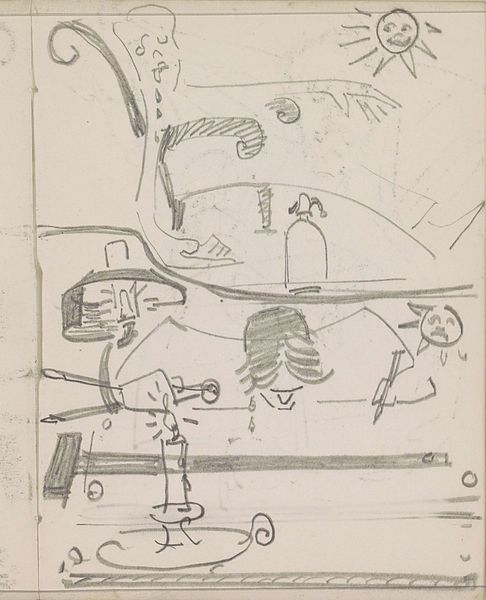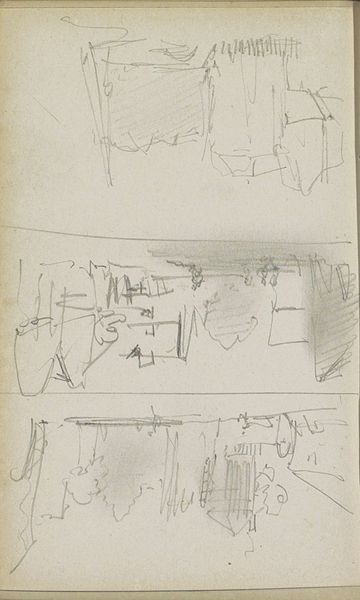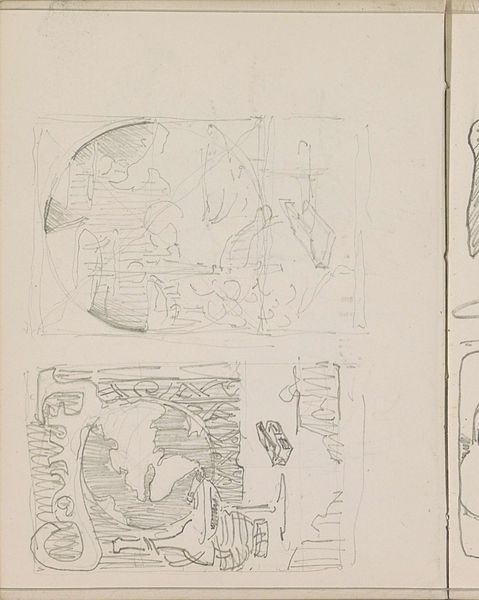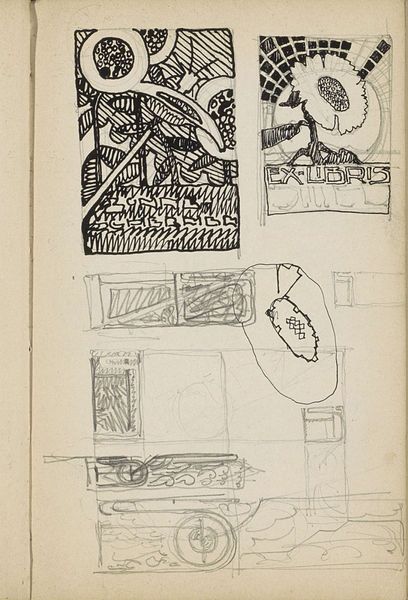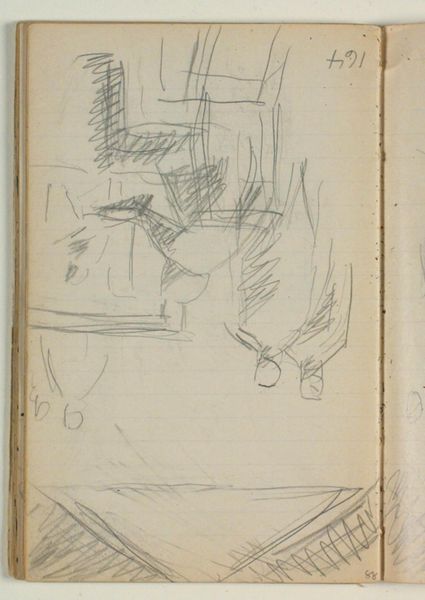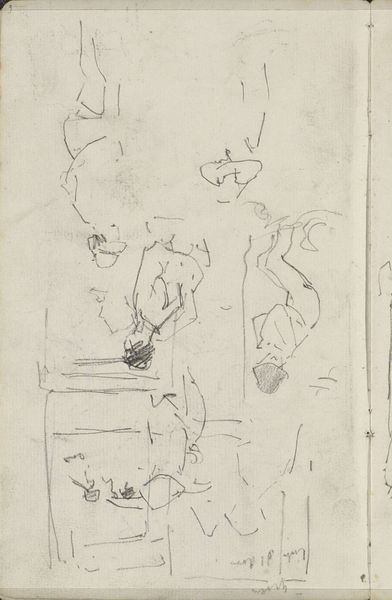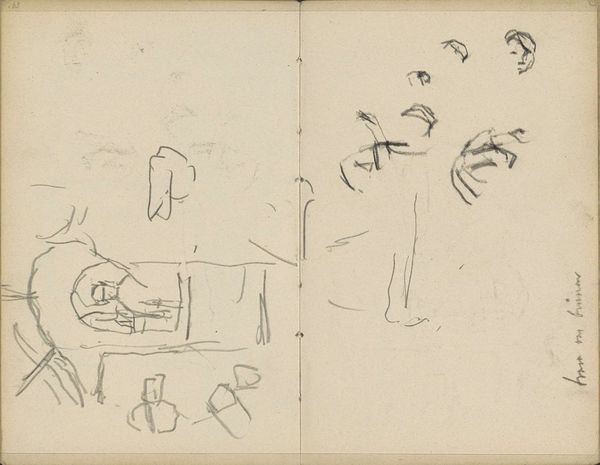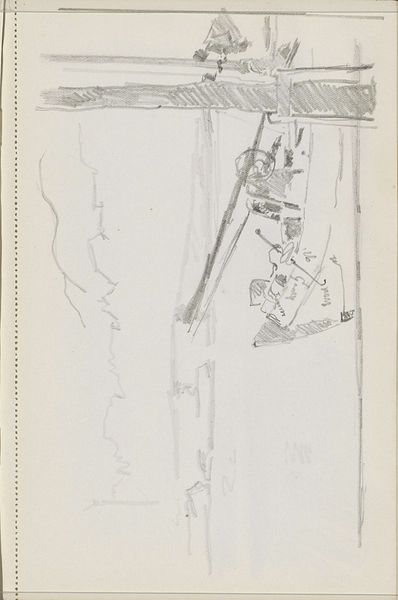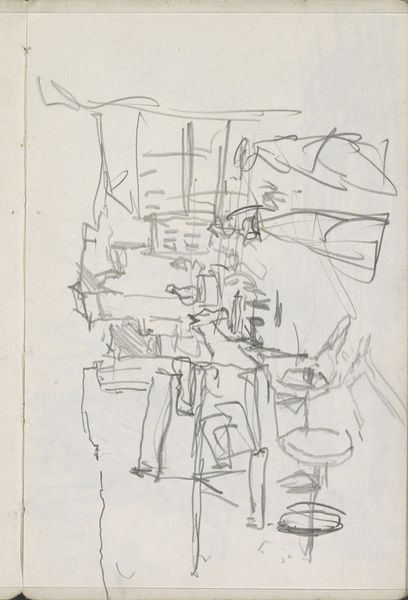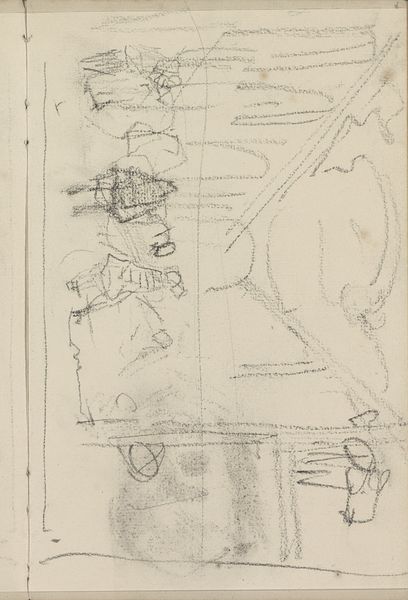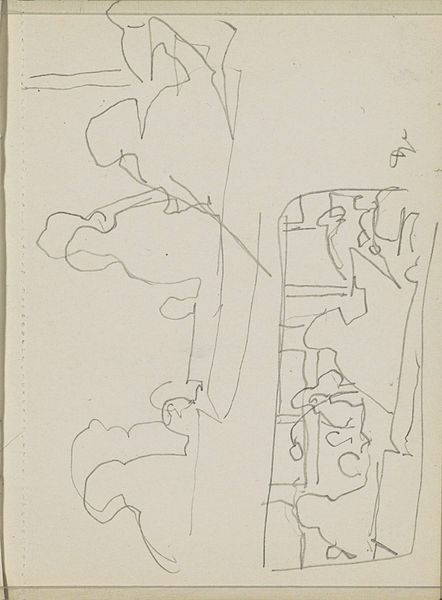
drawing, pencil
#
drawing
#
cubism
#
comic strip sketch
#
pen sketch
#
landscape
#
figuration
#
personal sketchbook
#
idea generation sketch
#
sketchwork
#
ink drawing experimentation
#
pen-ink sketch
#
pencil
#
sketchbook drawing
#
storyboard and sketchbook work
#
sketchbook art
Copyright: Rijks Museum: Open Domain
Editor: Here we have "Vier figuren zittend op een bank en een stilleven," or "Four figures sitting on a bench and a still life," a pencil drawing from around 1916 by Reijer Stolk, housed here at the Rijksmuseum. It looks like two separate sketches on one page. The top shows silhouetted figures, and the bottom looks almost abstract. What catches your eye when you look at this piece? Curator: Well, I see a moment in time captured just before the world changed irrevocably. Stolk created this piece just before the height of World War I in Europe. We see the influence of Cubism, a style gaining prominence at the time, in his reduction of forms, almost like preliminary idea for later artworks. Editor: How might the war and social upheaval play a role? Curator: Given the historical context, I think we have to ask, who were these people? What were they talking about as Stolk sketched them? How does their passivity, particularly in the top sketch, relate to anxieties bubbling under the surface? There is some tension between the mundane, a normal afternoon activity and looming sociopolitical context. And then the almost violent fracturing of the still life below... it speaks to this moment. The public role of art is shifting, you see. Artists are less concerned with idealised beauty and more with representing the often fragmented and disorienting reality of modern life. Editor: That's fascinating. It’s easy to just see sketches, but when you factor in the socio-political atmosphere, you uncover deeper meanings. The composition as a mirror for uncertainty... Curator: Exactly. The artist captures social tension through the guise of simple subject matters like people chatting, relaxing or even fruit in a bowl. Art becomes a visual record of societal anxiety and change. What did you observe through this discussion? Editor: I better grasp how the artist translates a broader environment. It shows me that we must think about where the image originates.
Comments
No comments
Be the first to comment and join the conversation on the ultimate creative platform.
